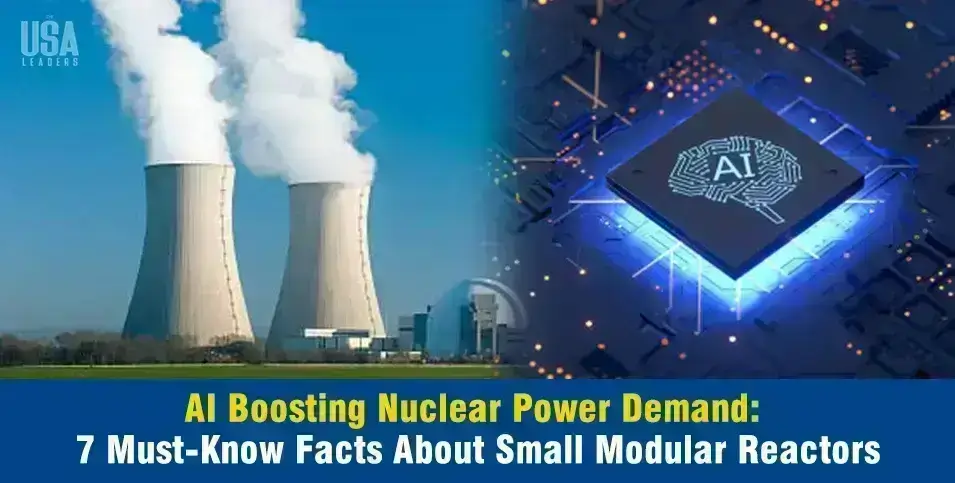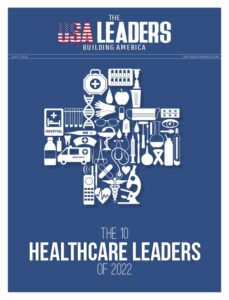The USA Leaders
21 October 2024
New York – With the dual challenges of climate change and soaring energy demands, AI boosting nuclear power demand is emerging as a crucial strategy for sustainable development.
Nuclear energy offers a reliable, low-carbon alternative to fossil fuels, aligning with global efforts toward achieving net-zero emissions. However, the real disruptor in this resurgence is the advent of Small Modular Reactors (SMRs), which are smaller, safer, and faster to deploy than traditional reactors.
Tech Giants Investing in SMRs
Amazon, Google, and Microsoft have recently announced significant investments in SMRs. Google has partnered with Kairos Power to develop multiple small reactors, aiming to have the first operational by 2030. Similarly, Amazon is investing in SMR technology through another startup, X-Energy, while Microsoft is reviving the infamous Three Mile Island plant to power its data centers.
Why the Rise of Small Modular Reactors?
AI development is notorious for being power-hungry. With giants like Google, Amazon, and Microsoft expanding their infrastructure, nuclear power offers the stability and sustainability they need. The U.S. and European governments, eager to meet their carbon-neutral goals, are also backing nuclear initiatives as an alternative to fossil fuels.
Here are seven crucial facts about AI boosting nuclear power demand and how SMRs are transforming energy strategies:
- Designing the Future: AI-Driven Reactor Models
AI-powered simulations predict reactor behavior under diverse scenarios, reducing design errors. What once took years in engineering time can now be modeled in mere weeks, accelerating SMR development.
Little Known Fact: AI-enhanced simulations cut development costs by up to 30%, making SMRs economically feasible for smaller energy grids and remote locations.
- Site Selection Gets Smarter
AI algorithms analyze vast datasets—ranging from geography to seismic data—to recommend the best locations for SMR deployment. This automated precision ensures that reactors are built in optimal environments with minimal risk.
Little Known Fact: AI tools can detect environmental risks 20% faster than conventional methods, speeding up approval processes.
- Automating Plant Operations for Peak Efficiency
AI-driven control systems continuously optimize SMR operations by adjusting core temperatures, coolant flow, and power output in real-time. This not only ensures maximum safety but also enhances the reactor’s energy output and lifetime.
Little Known Fact: Some SMRs using AI tools have automated 70% of routine operations, requiring far fewer human interventions compared to traditional nuclear plants.
- Maintenance with Minimal Human Intervention
AI-enabled predictive maintenance helps detect potential equipment failures months in advance, reducing the risk of unexpected shutdowns. By automating inspections using drones and robotics, AI ensures the safety and longevity of SMRs.
Little Known Fact: Predictive maintenance powered by AI extends reactor uptime by 15%, giving these reactors an edge in reliability over conventional nuclear plants.
- Enhanced Safety Systems with Machine Learning
Machine learning algorithms continuously monitor reactor operations to identify anomalies before they escalate. AI models, trained on years of nuclear data, predict fault patterns and automate emergency responses.
Little Known Fact: AI can detect anomalies 50 times faster than human operators, greatly reducing risks.
- AI-Integrated Grids for Renewable-Nuclear Synergy
SMRs are designed to complement renewable energy sources like solar and wind. AI-integrated smart grids balance the power load by seamlessly switching between nuclear and renewable sources based on demand fluctuations.
Little Known Fact: AI-powered smart grids can reduce energy waste by up to 10%, making SMRs an ideal partner for green energy networks.
- Expanding SMRs to Remote and Off-Grid Areas
The compact design of SMRs makes them ideal for remote regions and military bases. AI simplifies remote operations by automating critical processes, allowing these reactors to run with minimal staffing.
Little Known Fact: With AI assistance, SMRs are becoming viable in places like the Arctic and remote islands, where traditional nuclear power was never an option.
What’s the Future of AI Boosting Nuclear Power Demand?
With AI enhancing safety, efficiency, and scalability, SMRs are poised to revolutionize the nuclear energy landscape. As climate urgency mounts and energy demands soar, AI boosting nuclear power demand is proving essential for creating a sustainable future.
Nuclear energy, once viewed with skepticism, is regaining momentum, driven by technological breakthroughs and strategic investments. In the race to meet net-zero targets, the role of SMRs—powered by AI—will only grow more prominent, ensuring a steady energy supply for everything from smart grids to AI data centers.
Also Read: 7 Fascinating Facts About Sam Altman WORLD Rebranding: Another AI Revolution Alert?






























